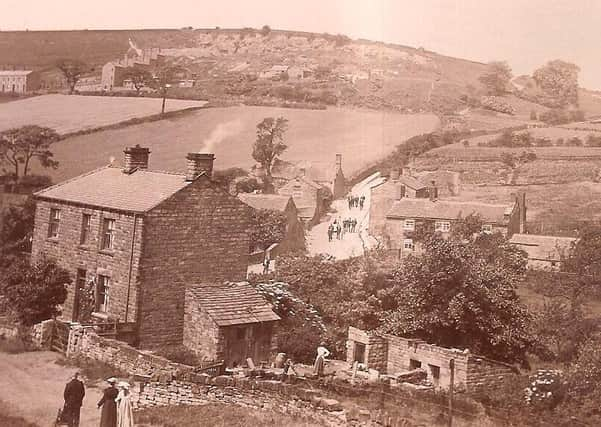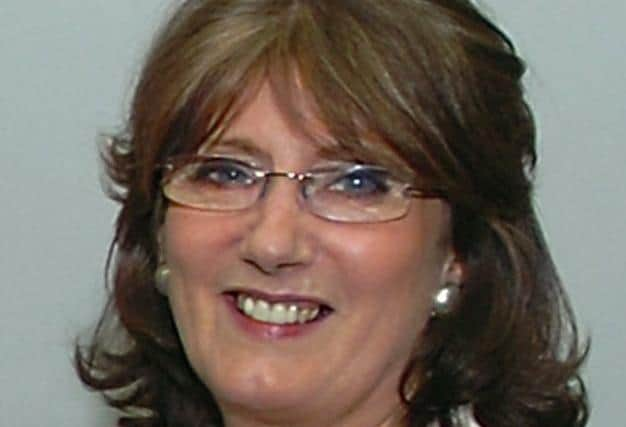The Nostalgia column with Margaret Watson: Historic coin haul discovered while digging trench


Roman coins have been found in various parts of the town including, Briestfield and Thornhill.
Some were also found in 1925 in the grounds of Crow Nest Park, all of which proves Romans did visit the town.
Advertisement
Hide AdAdvertisement
Hide AdThe most recent find of Roman coins in this district were discovered by council workmen in 1938 while digging trenches on the Overthorpe housing estate.


This amazing find was almost lost to posterity because workmen thought they were of no value and allowed residents to join in the search for more.
It was to be three days before the local authorities and the police were informed of this historic discovery.
The digging operations on this particular site had been going on for some time in the neighbourhood known as ‘Turnip Lane’ for the purpose of laying new gas mains.
Advertisement
Hide AdAdvertisement
Hide AdWhen the workmen first unearthed the coins they thought they were silver buttons, but two days later more coins were found by men digging a trench at the Overthorpe end of the housing estate.
The coins were lying under a large stone, and when further earth was removed, more coins were revealed.
Once again local people began gathering to “share” in the find, and even when the foreman was informed, still no-one realised the significance of what had been unearthed, and the local authorities were again not informed.
The coins found were no bigger than a sixpence and dated back more than 2,000 years.
Advertisement
Hide AdAdvertisement
Hide AdSoon the souvenir hunters were showing to friends the coins they’d obtained, and one local builder gave one to his son, a pupil at Wheelwright Grammar School.
He showed it to Dr W.C. Down, a master at the school, who happened to be honorary curator at the museum at Crow Nest Park, and he realised at once the importance of the coins.
The local authorities were immediately contacted, and, not surprisingly, the investigations were speeded up considerably.
The town clerk informed the police and between them they made a great effort to gather in all the coins which had been found.
Advertisement
Hide AdAdvertisement
Hide AdWhat happened next is interesting to record because today digging of that kind would have been postponed and archaeologists summoned to the area.
But, in those pre-war days, little was allowed to stand in the way of progress, especially when it came to building much-needed council houses.
I am convinced that much of Dewsbury’s history lies beneath a number of the council estates built in the town especially in the Thornhill area.
Following this significant find, the parks superintendent Mr J.F. Normanton sent two of his staff to inspect the soil in the vicinity of the discovery, and yet more coins were revealed – but even this did not hold up the digging.
Advertisement
Hide AdAdvertisement
Hide AdThe find caused great controversy in the village, especially when the police and council officers began going round the estate knocking on doors trying to retrieve any coins found by those who had helped workmen dig them up.
An inquest was called by the district coroner three weeks later, and the coins, which were all from the first half of the second century, were eventually handed over to the British Museum.
The ones which Dr Down had inspected were of Trojan, Hadrian and Antonious reign, and he believed they would probably been placed underneath the stone for safety and had lain there ever since.
Some of the coins were in an excellent state, and the inscriptions very clear. One coin bore the inscription “Hadranius Augustus” which was very legible.
Advertisement
Hide AdAdvertisement
Hide AdThe coins were placed in custody at the town hall to await the decision of the coroner.
Meanwhile, the local authority stressed it was important all those who had obtained any coins to return them immediately to the town hall.
The coroner instructed the jury to return a verdict that the coins were treasure trove and therefore the property of the king.
At the conclusion of the inquest, the foreman said the finders should be commended for turning the coins up so promptly.
Advertisement
Hide AdAdvertisement
Hide AdThe coroner believed those who had initially kept some and later handed them in, had not known their importance.
He said the Crown encouraged people finding anything in the way of treasure, gold or silver, to disclose them promptly so that if they were of any great value, they might be acquired for the British Museum
It turned out that the coins were not of any great monetary value, but if they had been retained for the British Museum, the finders would have been paid the full market value.
If, however, they had not been retained, the finds would have been returned to those who had found them.
Advertisement
Hide AdAdvertisement
Hide AdThe coroner named the men who he decided were the actual finders, as John Eaton, Harry Haigh, Ezra Crawshaw, George Edwin Wrigglesworth, William Russell, and some other persons unknown.
Dr Down was paid £3 7s to cover the cost incurred by the museum excavating to try and recover other coins.